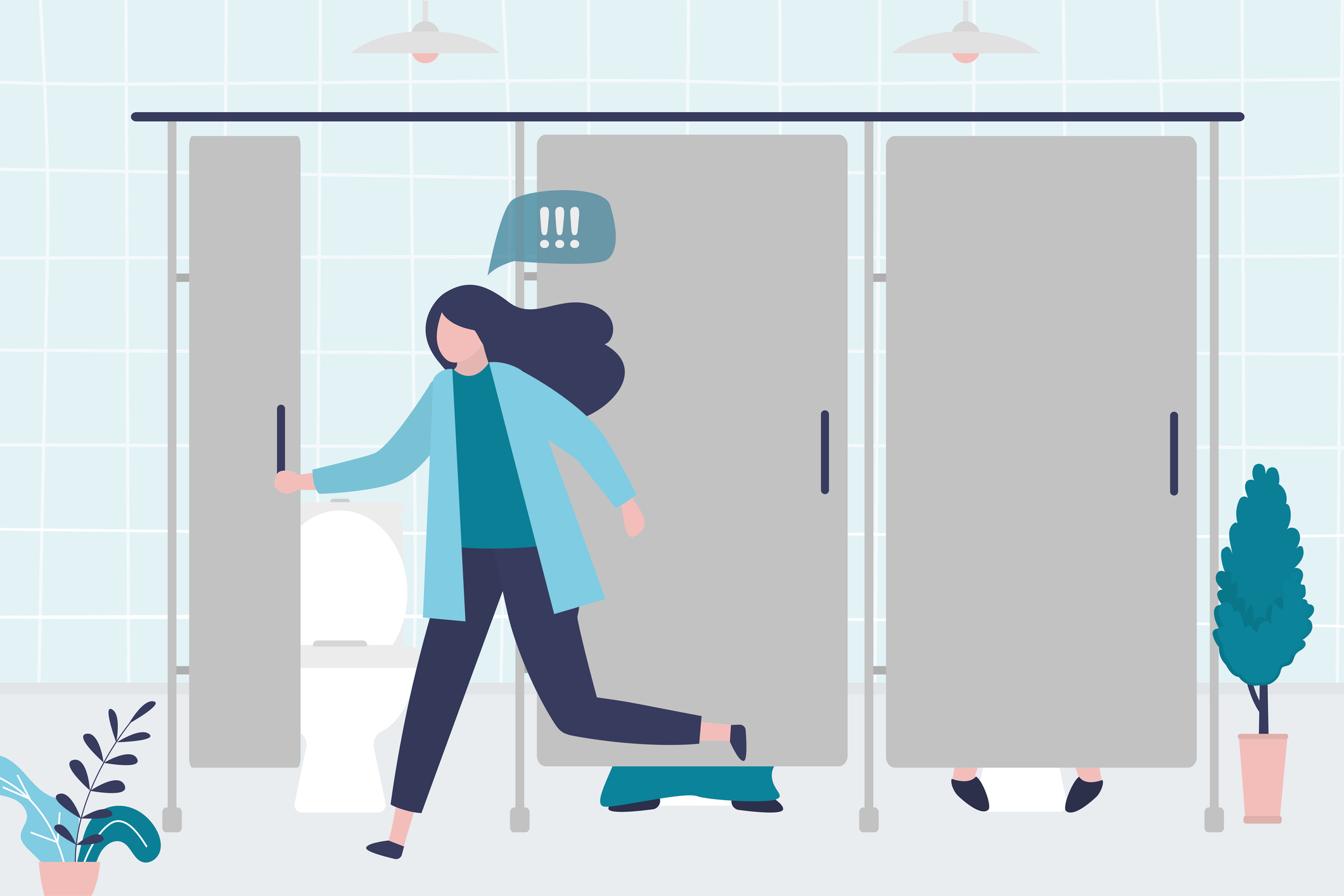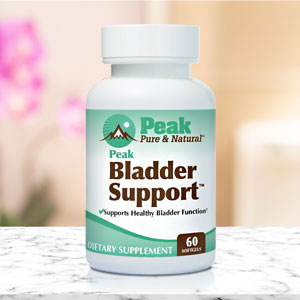Get Easy Health Digest™ in your inbox and don’t miss a thing when you subscribe today. Plus, get the free bonus report, Mother Nature’s Tips, Tricks and Remedies for Cholesterol, Blood Pressure & Blood Sugar as my way of saying welcome to the community!
Why bladder problems increase with age for some women

It’s embarrassing. It’s frustrating. And nobody wants to talk about it.
I’m talking about bladder leakage caused by overactive bladder (OAB) and urinary incontinence (UI).
In the United States, roughly 17 percent of women ages 20 and older suffer from UI. While that doesn’t seem like a lot, the number skyrockets as women age.
In fact, the prevalence of UI is 38 percent in American women ages 60 and up. That’s a little over 1 in 3 women!
Many women also suffer from stress urinary incontinence (SUI). If you’ve ever experienced bladder leakage while jumping, dancing or exercising, this is SUI — an involuntary loss of urine due to physical exertion.
OAB, by contrast, is characterized by the urgent need to urinate. It’s usually paired with increased daytime frequency and/or nocturia, a condition that causes you to wake up in the night because you have to urinate. While OAB doesn’t necessarily involve bladder leakage, it can be a symptom.
Helping women understand what type they’re likely to have may help them hone in on relief…
Women in midlife more likely to develop OAB
A study of more than 12,000 women in Japan indicates that postmenopausal women between the ages of 45 and 54 years are more likely to have OAB syndrome.
The study also showed that SUI symptoms can become less frequent after menopause — except in women who are considered obese and who had experience multiple births.
These findings are surprising. Multiple studies have been conducted on these urinary issues, and most of them indicate that as a woman grows older, her odds of developing bladder problems increase.
The goal of the Japanese study was to investigate prevalence and factors linked with urinary symptoms. Other factors reviewed included smoking status as well as a history of diabetes, hysterectomy and the use of hormone therapy.
“This study underscores how common urinary incontinence is in women, with nearly one in five Japanese women reporting urinary incontinence related to OAB or SUI in the last month,” says Dr. Stephanie Faubion, medical director of The North American Menopause Society.
“Midlife women were particularly affected by SUI (18.2% in women aged 50 to 54 years),” Faubion adds. “Given the significant negative effect on quality of life and the presence of effective strategies for management of these burdensome symptoms, clinicians should routinely ask women about urinary incontinence.”
Researchers suggest additional studies that consider the connection between a woman’s time since menopause and OAB symptoms in the perimenopause period.
What can be done?
There are now a variety of treatment options available. The first thing to do, however, is to discuss your OAB or UI with your doctor. They’ll need to rule out a serious condition that could be causing the bladder leakage.
Once your doctor has determined your bladder leakage is caused by pregnancy, childbirth and menopause taking a toll on your pelvic floor, you can consider which of the options you want to use to address it — starting with non-invasive solutions…
These include:
- Eating more fiber to reduce constipation (which can put pressure on the bladder) and reducing artificial sweeteners and caffeine (that can aggravate the bladder).
- Decreasing the amount you drink three hours before bedtime to improve nocturia. And double voiding, a technique that helps you empty your bladder completely when you use the bathroom.
- Regularly performing Kegel exercises. They’re great for strengthening your pelvic floor, especially when you initially do the exercises with a physical therapist who can show you how to perform them correctly. If you need a refresher, here is a guide to performing Kegel exercises the proper way. Or you can purchase a Kegel exercising device that’s been designed to help make it easier to perform Kegel exercises by targeting the right muscles and even reminding you to do them.
- Losing weight. As the Japanese study has shown, SUI improves for many women after menopause — except for those who are overweight.
- Trying natural remedies like pumpkin seed extract. In a 12-week study, it was shown to significantly reduce symptoms of overactive bladder. Kohki tea and phytoestrogens may also reduce symptoms of OAB by strengthening the pelvic floor.
- Lastly, have a backup: Products are now available, including streamlined pads, discreet disposable incontinence underwear, and even washable, reusable underwear that can absorb leaks and neutralize their odor. These would be especially helpful for women who suffer from SUI — and could help avoid embarrassing scenarios like leakage during aerobics class.
If your bladder leakage has become serious, you may need a more invasive treatment, like Botox injections or a sling procedure. Because Botox injections are usually not covered by insurance and the sling procedure requires surgery, these are usually not considered until all other remedies have failed.
Electrical stimulation also has helped many women improve their bladder leakage symptoms. While many forms of electrical stimulation do involve stimulating pelvic floor muscles by administering a small electrical current from within the vagina, they’re not nearly as invasive as Botox or sling procedures.
Editor’s note: Did you know that when you take your body from acid to alkaline you can boost your energy, lose weight, soothe digestion, avoid illness and achieve wellness? Click here to discover The Alkaline Secret to Ultimate Vitality and revive your life today!
Sources:
Overactive Bladder and Urinary Incontinence Worsen With Age — The North American Menopause Society
Urinary incontinence in the young woman: treatment plans and options available — Women’s Health (London, England)
Nocturia — Cleveland Clinic
Effect of oral Kohki tea on bladder dysfunction induced by severe partial outlet obstruction — The Journal of Urology













